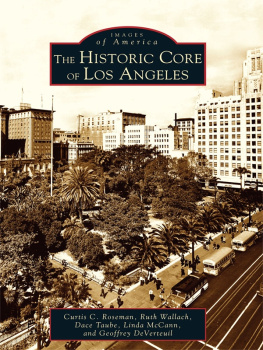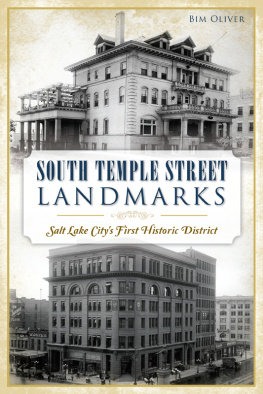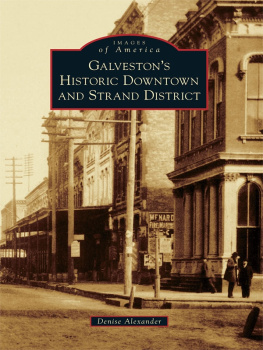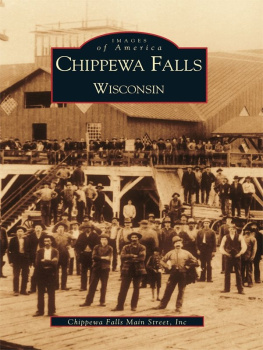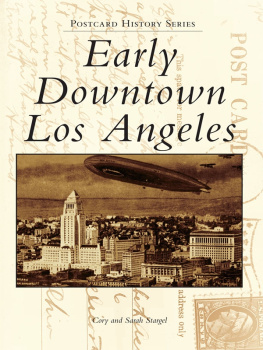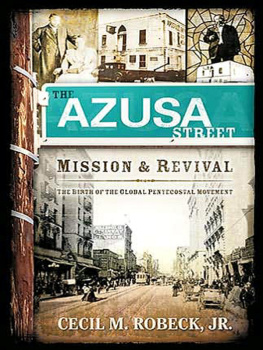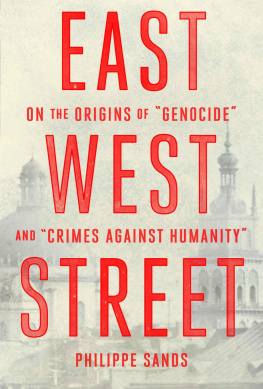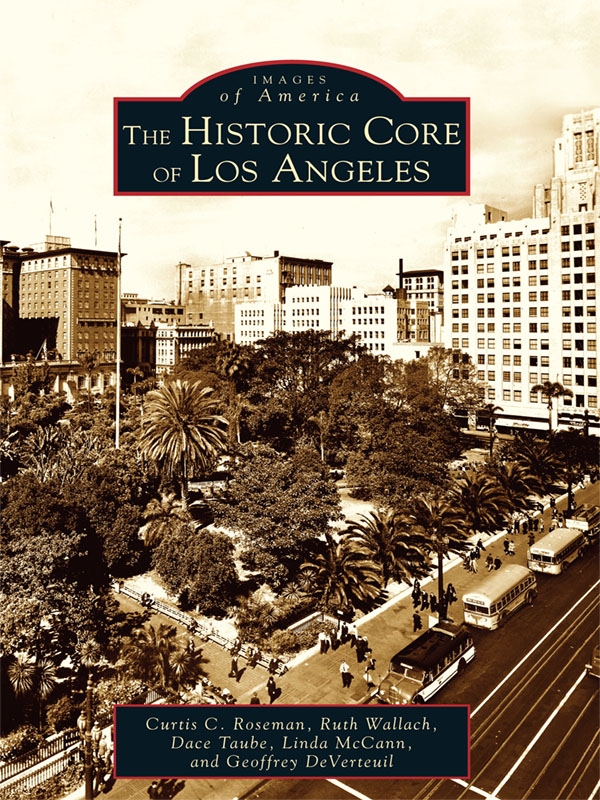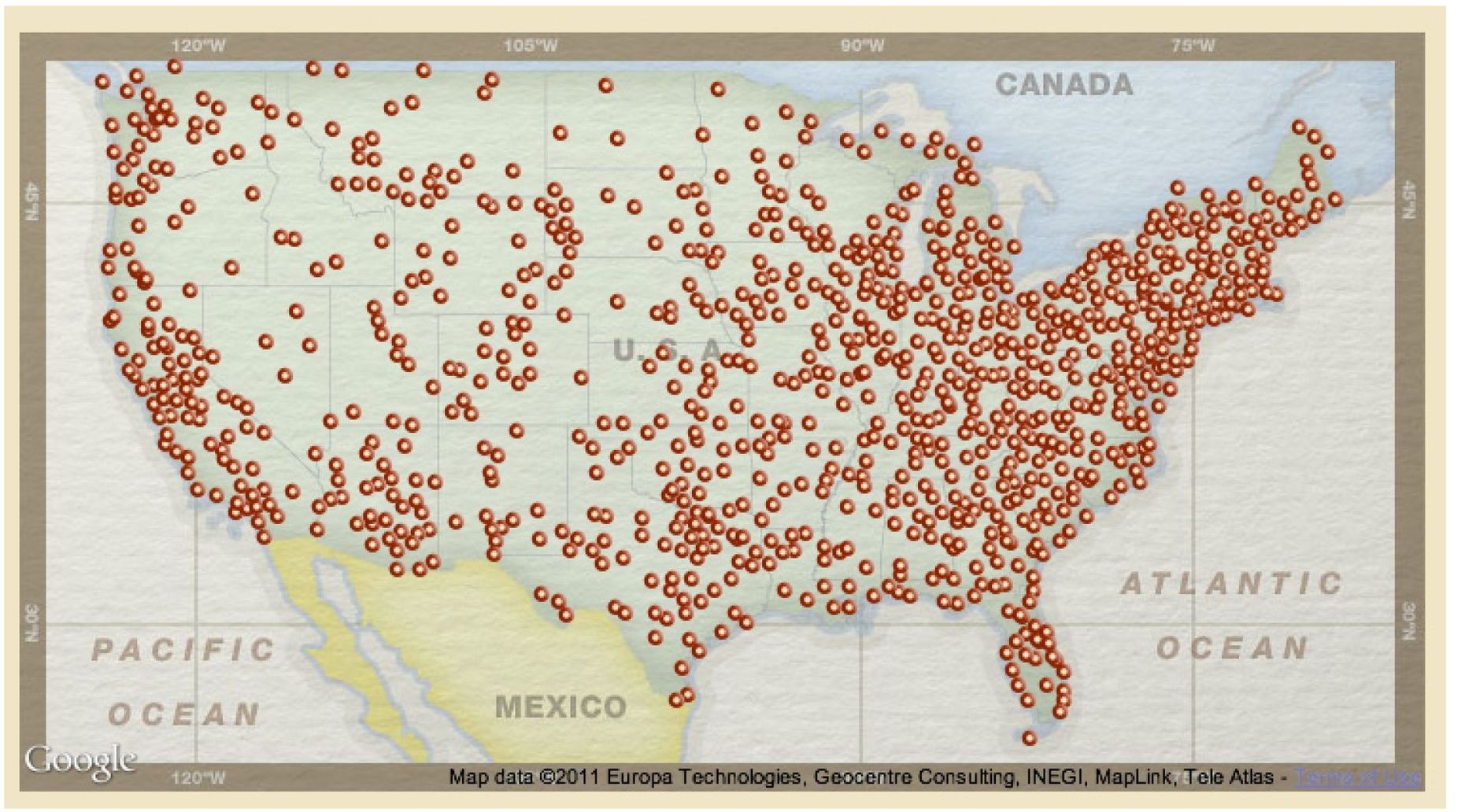Curtis C. Roseman is a professor of geography at the University of Southern California. His research interests include the migration and settlement of ethnic populations and American cities downtowns. With Geoffrey DeVerteuil, he has developed a web site on downtown Los Angeles: www.usc.edu/dept/geography/losangeles/lawalk/ . Roseman wrote the introduction and the Main Street and Spring Street chapters.
BIBLIOGRAPHY
Gates, Worthington, comp . Los Angeles 1909 . Los Angeles: Western Litho Co., 1909. Courtesy of the Library of Congress American Memory Map Collections: 15002004, http://memory.loc.gov/ammem/gmdhtml/gmdhome.html
Gebhard, David and Robert Winter. Los Angeles: An Architectural Guide . Salt Lake City, UT: Gibbs-Smith Publisher, 1994.
Guinn, J. M. The True Story of Central Park. Annual Publication of the Historical Society of Southern California 8 (19091911): 211216.
Klein, Norman M. The History of Forgetting: Los Angeles and the Erasure of Memory . New York: Verso, 1997.
Longstreth, Richard W. City Center to Regional Mall: Architecture, the Automobile, and Retailing in Los Angeles, 19201950 . Cambridge, Mass.: MIT Press, 1997.
Los Angeles Times (1886Current Files) [newspaper online available from Proquest Historical Newspapers].
Nelson, Howard J. The Los Angeles Metropolis . Dubuque, IA: Kendall/Hunt Pub. Co., 1983.
Parkinson, John. Incidents By The Way: The Boy! What has the Future in Store for Him? What Will Be His Experience? Los Angeles: Press of Geo. Rice & Sons, 1935.
Soter, Bernadette Dominique. The Light of Learning: An Illustrated History of the Los Angeles Public Library . Los Angeles: Library Foundation of Los Angeles, 1993.
Splansky, Joel. Downtown Los Angeles . Typescript. 1996.
Robinson, W.W. The Story of Pershing Square . Los Angeles: Title Guarantee and Trust Company, 1931.
Pitt, Leonard and Dale Pitt. Los Angeles A to Z: An Encyclopedia of the City and County . Berkeley: University of California Press, 1997.
ABOUT THE USC ARCHIVES
The majority of images in this book were made available courtesy of the University of Southern California on behalf of the USC Specialized Libraries and Archival Collections. The authors drew on the following archival collections:
CHS: The California Historical Society/TICOR photographic collection was created by C.C. Pierce, a commercial photographer who documented the growth of Southern California from the late 1800s through the 1930s. The collection concentrates on downtown Los Angeles and includes street, architectural, and panoramic views, but also captures views of seaside cities, rural images, transportation, industrial activity, missions and Southwest Native Americans.
The Examiner : The Los Angeles Examiner photograph morgue is a collection of images, which illustrated articles in the newspaper from the 1930s through the 1950s. The collection includes a wide range of topics and every newsworthy individual from those three decades.
Whittington: The Dick Whittington collection was created by a commercial photographer whose studio was one of the eminent photography establishments in Southern California from the mid-1920s through the 1970s. The clientele of the studio included oil, aviation, and automobile companies and large and small business establishments.
AAA: The Automobile Club of Southern California archive contains documents and pictorial materials relating to the clubs history since its inception in 1909, and to local and regional architecture, infrastructure, public policy, and cultural and recreational history.
Find more books like this at
www.imagesofamerica.com
Search for your hometown history, your old
stomping grounds, and even your favorite sports team.
One
MAIN STREET AND EAST
ARRIVING AND STAYING IN DOWNTOWN
For five decades following the 1880s, the railroad depots located east of Main Street provided the primary connection between Los Angeles and the rest of the United States. By 1900 several smaller lines had been consolidated under three large railroad companies, the Southern Pacific, Santa Fe, and the Union Pacific, each of which had established a depot a few blocks east of Main Street. As the core of the central business district migrated southward from what is now the civic center area, many of the modern, 20th-century hotels were established on Main and adjacent streets to be accessible to those depots. Some of them are still standing, including the Rosslyn, Frontier, Van Nuys, Alexandria, Hayward, and El Rey. In 1939, all intercity rail traffic was consolidated at Union Station, located a few blocks north of the depots that it replaced.
During the first half of the 20th century, another rail system, the Red Cars of the Pacific Electric interurban rail system, connected downtown Los Angeles to the urban region, including the San Fernando Valley, Long Beach, and San Bernardino. Two of the Red Car terminals, the Pacific Electric Building on Main and the Subway Terminal Building on Hill Streets, became major focal points of activity in downtown and remain today as significant historical landmarks.
After World War II, both intercity and interurban rail rapidly declined in importance relative to automobile travel. Because of this, and because of competition from new hotels west of the Historic Core, the hotels on and near Main Street became less attractive to many business and pleasure travelers. After World War II, Main Street continued to reflect its history as a hotel district, with a street life that included bars, adult theaters, and bookstores. In the latter half of the 20th century the area east of Main Street was the core of skid row, and some of the hotels became single-room occupancy facilities that served the poor and the periodic homeless. At the beginning of the 21st century, Main Street began to experience a turnaround, as several of its large historic buildings were converted to residential lofts, bringing many new residents to the area.

